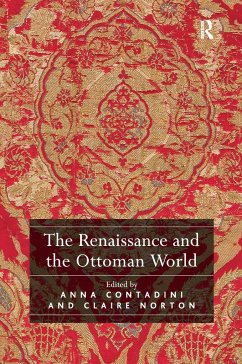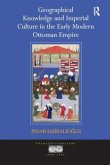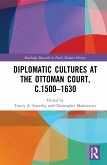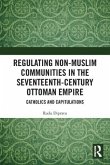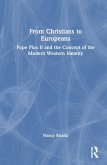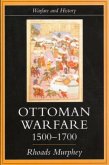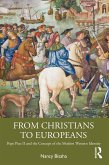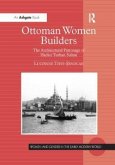The Renaissance and the Ottoman World
Herausgeber: Contadini, Anna
The Renaissance and the Ottoman World
Herausgeber: Contadini, Anna
- Gebundenes Buch
- Merkliste
- Auf die Merkliste
- Bewerten Bewerten
- Teilen
- Produkt teilen
- Produkterinnerung
- Produkterinnerung
The fourteen articles in this volume bring together some of the latest research on the cultural, intellectual and commercial interactions during the Renaissance between Western Europe and the Middle East, with particular reference to the Ottoman Empire.
Andere Kunden interessierten sich auch für
![Geographical Knowledge and Imperial Culture in the Early Modern Ottoman Empire Geographical Knowledge and Imperial Culture in the Early Modern Ottoman Empire]() Pinar EmiraliogluGeographical Knowledge and Imperial Culture in the Early Modern Ottoman Empire59,99 €
Pinar EmiraliogluGeographical Knowledge and Imperial Culture in the Early Modern Ottoman Empire59,99 €![Diplomatic Cultures at the Ottoman Court, c.1500-1630 Diplomatic Cultures at the Ottoman Court, c.1500-1630]() Diplomatic Cultures at the Ottoman Court, c.1500-163041,99 €
Diplomatic Cultures at the Ottoman Court, c.1500-163041,99 €![Regulating Non-Muslim Communities in the Seventeenth-Century Ottoman Empire Regulating Non-Muslim Communities in the Seventeenth-Century Ottoman Empire]() Radu DipratuRegulating Non-Muslim Communities in the Seventeenth-Century Ottoman Empire42,99 €
Radu DipratuRegulating Non-Muslim Communities in the Seventeenth-Century Ottoman Empire42,99 €![From Christians to Europeans From Christians to Europeans]() Nancy BisahaFrom Christians to Europeans196,99 €
Nancy BisahaFrom Christians to Europeans196,99 €![Ottoman Warfare, 1500-1700 Ottoman Warfare, 1500-1700]() Rhoads MurpheyOttoman Warfare, 1500-170041,99 €
Rhoads MurpheyOttoman Warfare, 1500-170041,99 €![From Christians to Europeans From Christians to Europeans]() Nancy BisahaFrom Christians to Europeans41,99 €
Nancy BisahaFrom Christians to Europeans41,99 €![Ottoman Women Builders Ottoman Women Builders]() Lucienne Thys-SenocakOttoman Women Builders55,99 €
Lucienne Thys-SenocakOttoman Women Builders55,99 €-
-
-
The fourteen articles in this volume bring together some of the latest research on the cultural, intellectual and commercial interactions during the Renaissance between Western Europe and the Middle East, with particular reference to the Ottoman Empire.
Hinweis: Dieser Artikel kann nur an eine deutsche Lieferadresse ausgeliefert werden.
Hinweis: Dieser Artikel kann nur an eine deutsche Lieferadresse ausgeliefert werden.
Produktdetails
- Produktdetails
- Verlag: Taylor & Francis Ltd
- Seitenzahl: 352
- Erscheinungstermin: 9. Oktober 2013
- Englisch
- Abmessung: 242mm x 167mm x 25mm
- Gewicht: 910g
- ISBN-13: 9781472409911
- ISBN-10: 1472409914
- Artikelnr.: 41248884
- Herstellerkennzeichnung
- Libri GmbH
- Europaallee 1
- 36244 Bad Hersfeld
- gpsr@libri.de
- Verlag: Taylor & Francis Ltd
- Seitenzahl: 352
- Erscheinungstermin: 9. Oktober 2013
- Englisch
- Abmessung: 242mm x 167mm x 25mm
- Gewicht: 910g
- ISBN-13: 9781472409911
- ISBN-10: 1472409914
- Artikelnr.: 41248884
- Herstellerkennzeichnung
- Libri GmbH
- Europaallee 1
- 36244 Bad Hersfeld
- gpsr@libri.de
Anna Contadini is Professor of the History of Islamic Art, Department of the History of Art and Archaeology, SOAS, University of London, UK. Claire Norton is Senior Lecturer in Islamic History at St Mary's University College, Twickenham, UK.
Contents: Foreword; Section I Commercial, Artistic and Cultural Contexts:
Blurring the boundaries: intellectual and cultural interactions between the
Eastern and Western: Christian and Muslim worlds, Claire Norton; Sharing a
taste? Material culture and intellectual curiosity around the Mediterranean
from the 11th to the 16th century, Anna Contadini; The Lepanto paradigm
revisited: knowing the Ottomans in the 16th century, Palmira Brummett.
Section II Texts, Art and Music as Media for the Transmission of
Intercultural Influences: The role of the book in the transfer of culture
between Venice and the Eastern Mediterranean, Deborah Howard; The
'reception of the Venetian ambassadors in Damascus': dating, meaning and
attribution, Caroline Campbell; Giacomo Gastaldi's maps of Anatolia: the
evolution of a shared Venetian-Ottoman cultural space?, Sonja Brentjes;
Turning a deaf ear, Owen Wright. Section III Renaissance Thought: Old and
new demarcation lines between Christian Europe and the Islamic Ottoman
Empire: from Pope Pius II (1458-1464) to Pope Benedict XVI (2005-13),
Zweder von Martels; Turco-Graecia: German humanists and the end of Greek
antiquity - cultural exchange and misunderstanding, Asaph Ben Tov; Positive
views of Islam and of Ottoman rule in the 16th century: the case of Jean
Bodin, Noel Malcolm. Section IV The Renaissance and the Ottoman Empire:
Binding relationships: Mamluk, Ottoman and Renaissance bookbindings, Alison
Ohta; Ottoman textiles in European markets, Suraiya Faroqhi; Mehmed II as a
patron of Greek philosophy: Latin and Byzantine perspectives, Anna Akasoy;
Bibliography; Index.
Blurring the boundaries: intellectual and cultural interactions between the
Eastern and Western: Christian and Muslim worlds, Claire Norton; Sharing a
taste? Material culture and intellectual curiosity around the Mediterranean
from the 11th to the 16th century, Anna Contadini; The Lepanto paradigm
revisited: knowing the Ottomans in the 16th century, Palmira Brummett.
Section II Texts, Art and Music as Media for the Transmission of
Intercultural Influences: The role of the book in the transfer of culture
between Venice and the Eastern Mediterranean, Deborah Howard; The
'reception of the Venetian ambassadors in Damascus': dating, meaning and
attribution, Caroline Campbell; Giacomo Gastaldi's maps of Anatolia: the
evolution of a shared Venetian-Ottoman cultural space?, Sonja Brentjes;
Turning a deaf ear, Owen Wright. Section III Renaissance Thought: Old and
new demarcation lines between Christian Europe and the Islamic Ottoman
Empire: from Pope Pius II (1458-1464) to Pope Benedict XVI (2005-13),
Zweder von Martels; Turco-Graecia: German humanists and the end of Greek
antiquity - cultural exchange and misunderstanding, Asaph Ben Tov; Positive
views of Islam and of Ottoman rule in the 16th century: the case of Jean
Bodin, Noel Malcolm. Section IV The Renaissance and the Ottoman Empire:
Binding relationships: Mamluk, Ottoman and Renaissance bookbindings, Alison
Ohta; Ottoman textiles in European markets, Suraiya Faroqhi; Mehmed II as a
patron of Greek philosophy: Latin and Byzantine perspectives, Anna Akasoy;
Bibliography; Index.
Contents: Foreword; Section I Commercial, Artistic and Cultural Contexts:
Blurring the boundaries: intellectual and cultural interactions between the
Eastern and Western: Christian and Muslim worlds, Claire Norton; Sharing a
taste? Material culture and intellectual curiosity around the Mediterranean
from the 11th to the 16th century, Anna Contadini; The Lepanto paradigm
revisited: knowing the Ottomans in the 16th century, Palmira Brummett.
Section II Texts, Art and Music as Media for the Transmission of
Intercultural Influences: The role of the book in the transfer of culture
between Venice and the Eastern Mediterranean, Deborah Howard; The
'reception of the Venetian ambassadors in Damascus': dating, meaning and
attribution, Caroline Campbell; Giacomo Gastaldi's maps of Anatolia: the
evolution of a shared Venetian-Ottoman cultural space?, Sonja Brentjes;
Turning a deaf ear, Owen Wright. Section III Renaissance Thought: Old and
new demarcation lines between Christian Europe and the Islamic Ottoman
Empire: from Pope Pius II (1458-1464) to Pope Benedict XVI (2005-13),
Zweder von Martels; Turco-Graecia: German humanists and the end of Greek
antiquity - cultural exchange and misunderstanding, Asaph Ben Tov; Positive
views of Islam and of Ottoman rule in the 16th century: the case of Jean
Bodin, Noel Malcolm. Section IV The Renaissance and the Ottoman Empire:
Binding relationships: Mamluk, Ottoman and Renaissance bookbindings, Alison
Ohta; Ottoman textiles in European markets, Suraiya Faroqhi; Mehmed II as a
patron of Greek philosophy: Latin and Byzantine perspectives, Anna Akasoy;
Bibliography; Index.
Blurring the boundaries: intellectual and cultural interactions between the
Eastern and Western: Christian and Muslim worlds, Claire Norton; Sharing a
taste? Material culture and intellectual curiosity around the Mediterranean
from the 11th to the 16th century, Anna Contadini; The Lepanto paradigm
revisited: knowing the Ottomans in the 16th century, Palmira Brummett.
Section II Texts, Art and Music as Media for the Transmission of
Intercultural Influences: The role of the book in the transfer of culture
between Venice and the Eastern Mediterranean, Deborah Howard; The
'reception of the Venetian ambassadors in Damascus': dating, meaning and
attribution, Caroline Campbell; Giacomo Gastaldi's maps of Anatolia: the
evolution of a shared Venetian-Ottoman cultural space?, Sonja Brentjes;
Turning a deaf ear, Owen Wright. Section III Renaissance Thought: Old and
new demarcation lines between Christian Europe and the Islamic Ottoman
Empire: from Pope Pius II (1458-1464) to Pope Benedict XVI (2005-13),
Zweder von Martels; Turco-Graecia: German humanists and the end of Greek
antiquity - cultural exchange and misunderstanding, Asaph Ben Tov; Positive
views of Islam and of Ottoman rule in the 16th century: the case of Jean
Bodin, Noel Malcolm. Section IV The Renaissance and the Ottoman Empire:
Binding relationships: Mamluk, Ottoman and Renaissance bookbindings, Alison
Ohta; Ottoman textiles in European markets, Suraiya Faroqhi; Mehmed II as a
patron of Greek philosophy: Latin and Byzantine perspectives, Anna Akasoy;
Bibliography; Index.

